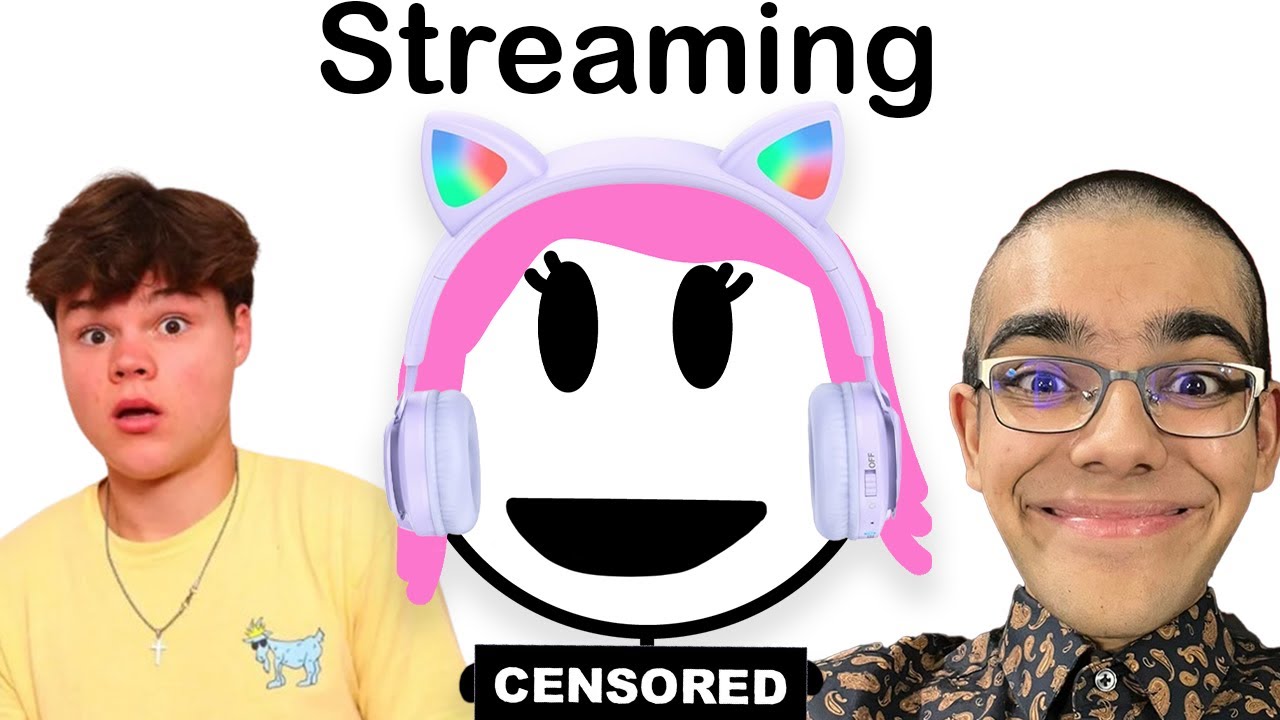Introduction to YouTube Streaming Challenges in 2024

As we dive into 2024, YouTube continues to be a powerhouse for video content, but many users are facing frustrating lagging issues that interrupt their viewing experience. With millions of creators uploading content and viewers streaming on various devices, it’s no surprise that some challenges have emerged. In this post, we’ll explore the primary reasons behind YouTube lagging and common streaming issues that have been popping up this year. Let’s get started!
Also Read This: How to Post on YouTube from Your iPhone: A Step-by-Step Tutorial
Understanding YouTube Lag: Causes and Symptoms

YouTube lag can be a real buzzkill when you're trying to enjoy your favorite videos. But what exactly causes this lag, and how can you identify if you’re dealing with it? Let’s break it down.
*Causes of YouTube Lag:
- Network Issues: A slow or unstable internet connection is one of the most common culprits. If your Wi-Fi signal is weak or you’re experiencing high latency, buffering becomes inevitable.
- Device Limitations: Older devices may struggle to handle high-resolution videos. If your device's hardware is outdated, you might experience lag during playback.
- Browser Problems: Sometimes, the browser you’re using can affect performance. Extensions, outdated versions, or even cache buildup can lead to streaming issues.
- YouTube Server Overload: During peak times, YouTube’s servers can get overloaded with traffic, causing delays and buffering for users.
- Video Quality Settings: Streaming in high resolutions (like 4K) can be demanding. If your connection can’t support it, YouTube will struggle to deliver smooth playback.
Symptoms of YouTube Lag*:
- Buffering: You may notice the dreaded buffering wheel, which can pop up repeatedly and disrupt your viewing experience.
- Stuttering Playback: Videos might freeze or stutter, making it difficult to enjoy the content.
- Audio-Video Sync Issues: Sometimes the audio and video can fall out of sync, leading to a disjointed experience.
- Low Resolution Streaming: If YouTube automatically lowers the video quality, it may indicate your connection can’t handle higher settings.
Now that we’ve covered the causes and symptoms, you might be wondering how to address these issues. Staying connected and informed about your settings and device capabilities can make a huge difference. In the following sections, we’ll explore some effective solutions to mitigate these streaming challenges. Stay tuned!
Also Read This: How to Get Subscribe Link for Your YouTube Channel: A Quick Guide to Sharing Your Channel’s Subscribe Link
3. Common Streaming Issues Faced by Users
When it comes to streaming on YouTube, lagging isn’t just a nuisance; it can turn an exciting video into a frustrating experience. Here are some of the common issues users encounter:
- Buffering: This is perhaps the most notorious issue. You might be enjoying a live stream or a new episode, and suddenly, the dreaded spinning wheel appears. Buffering can occur due to slow internet speeds or high traffic on YouTube's servers.
- Low Video Quality: To combat lag, YouTube often automatically adjusts the video quality. While this can help with buffering, it may result in a grainy or pixelated viewing experience.
- Audio Sync Issues: Have you ever noticed the sound not matching the video? This can happen when your connection is unstable, leading to delays in audio and video playback.
- Frequent Disconnections: If you find yourself constantly having to reconnect or reload the video, it could be a sign of a weak connection or issues with the platform itself.
- Incompatible Devices: Sometimes, the device you're using can contribute to streaming problems. Older devices may struggle to handle high-definition content or newer features.
These issues can arise for various reasons, but troubleshooting is often straightforward. Clearing the browser cache, updating the app, or even restarting your device can sometimes do wonders. However, understanding the technical factors behind these issues is equally important.
Also Read This: How Old Is Elliot, the Popular Gorilla Tag YouTuber, and What Is His Background?
4. Technical Factors Contributing to YouTube Lag
Now that we've identified common streaming issues, let’s dive deeper into the technical factors that often contribute to YouTube lag. Understanding these factors can help you pinpoint the exact problem:
| Factor | Description |
|---|---|
| Internet Speed | A slow internet connection is the most obvious culprit. For smooth streaming, YouTube recommends at least 3 Mbps for standard quality and 25 Mbps for 4K streaming. |
| Network Congestion | If multiple devices are connected to the same network, they can hog bandwidth. This can become particularly problematic during peak hours when everyone is online. |
| Server Issues | Sometimes, the problem isn’t on your end. YouTube’s servers might be experiencing heavy traffic or outages, leading to lag for all users. |
| Wi-Fi Interference | Physical obstructions like walls, along with other electronic devices, can interfere with Wi-Fi signals, resulting in inconsistent streaming quality. |
| Device Performance | Older devices with outdated software may struggle with modern streaming requirements, leading to lag or crashes during playback. |
By addressing these technical factors, you can often mitigate lagging issues on YouTube. Whether upgrading your internet plan, using an Ethernet connection, or ensuring your device is up to date, taking proactive steps can enhance your viewing experience significantly!
Also Read This: How Do I Turn on Closed Caption on YouTube TV? Enabling Subtitles for YouTube TV Content
5. User Experiences and Feedback on YouTube Performance
YouTube has become a staple for entertainment, education, and inspiration. However, many users have reported various performance issues that can be quite frustrating. While some love the platform for its variety of content, the experience can sometimes be marred by lagging. Here’s a look at what users are saying about their YouTube experiences in 2024.
Frequent Buffering: A common complaint is frequent buffering, which disrupts the flow of videos. Many users express frustration, particularly during live streams where every second counts. Comments like, “I was halfway through a live event, and it kept freezing!” highlight the urgency to address this issue.
Video Quality Delays: Another issue is the video quality not matching user expectations. Some users find that the platform defaults to lower resolutions, impacting their viewing pleasure. Comments such as, “I expected HD but got 480p. What’s up with that?” are prevalent in forums.
Device-Specific Problems: Interestingly, user experiences can vary widely depending on the device. Mobile users often report smoother playback compared to those using smart TVs or older computers. A user might say, “My phone plays videos just fine, but my TV? It's a mess!” This disparity indicates that device compatibility could be a significant factor in streaming performance.
Feedback from Creators: Not just viewers, but content creators are also voicing their concerns. Some report that their uploads take longer to process, which can delay content delivery. Creators often ask, “Why does it take hours to process a 10-minute video?” This can lead to missed engagement opportunities and viewer frustration.
Overall, user feedback is a mixed bag. While many appreciate YouTube's vast content library and user-friendly interface, the ongoing lagging and buffering issues are pushing some users to explore alternative platforms. The call for improved performance is loud and clear, and YouTube has some work to do if it wants to keep its loyal fanbase happy.
6. Tips for Improving Your YouTube Streaming Experience
If you're tired of lagging videos and frustrating buffering times, fear not! There are several strategies you can employ to enhance your YouTube streaming experience in 2024. Let’s dive into some actionable tips:
- Check Your Internet Speed: Before blaming YouTube, test your internet connection. A speed test can reveal if your bandwidth is the culprit. Aim for at least 5 Mbps for standard quality and 25 Mbps for HD.
- Lower Video Quality: If you’re experiencing constant buffering, try lowering the video quality. Click on the gear icon (settings) and adjust the resolution to 720p or 480p for smoother playback.
- Clear Cache and Cookies: Sometimes, your browser's accumulated data can slow things down. Regularly clearing your cache and cookies can improve loading times.
- Use an Ethernet Connection: If possible, connect your device to your router using an Ethernet cable. This provides a more stable connection than Wi-Fi and can significantly reduce lag.
- Close Unnecessary Tabs/Apps: Too many tabs or background apps can hog your bandwidth. Close what you’re not using to free up resources for a better streaming experience.
Bonus Tip: Consider using YouTube's “Offline” feature to download videos for later viewing. This can be a game-changer if you know you'll be in an area with weak connectivity.
Implementing these tips can drastically improve your YouTube experience and help you enjoy content without interruption. And remember, if issues persist, reaching out to your ISP or checking for YouTube updates might be the next step!
 admin
admin








